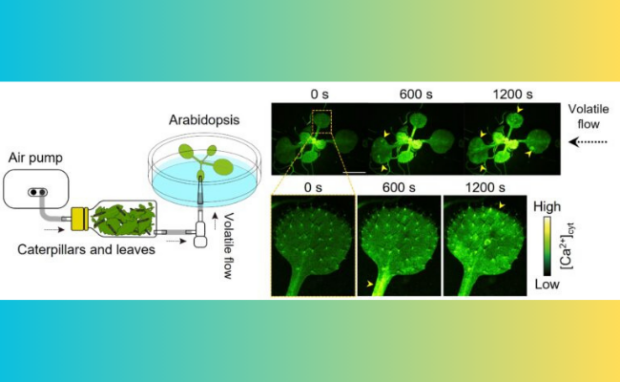Scientists film plants ‘talking’ to each other
Japanese scientists took a video illustrating how plants communicate with each other. They created a device that vents chemicals from plants being damaged by insects directly into a healthy plant. In response, the video shows the living one producing calcium through its leaves, which indicates the plant senses danger.
We don’t see plants prowling in the wild, hunting prey, and making sounds, so it’s easy to assume they don’t communicate with each other. However, this experiment proves that plants can convey messages to each other for survival. As a result, it becomes an eye-opener that expands our understanding of the Earth’s green denizens.
This article will discuss how scientists captured plants talking and explain this behavior. Later, I will share a recent breakthrough showing what we can do with more plant knowledge.
How did scientists capture plants talking?
Molecular biologists Yuri Aratani and Takuya Uemura rigged a pump to transfer compounds emitted by injured and insect-riddled plants to undamaged ones. Specifically, they put caterpillars (Spodoptera litura) on tomato leaves and used an intact Arabidopsis plant.
The scientists also genetically altered them to contain a biosensor that glowed green when they detected calcium ions. ScienceAlert said the team used a similar method to measure calcium signals in a study on Mimosa pudica plants.
Human cells also use calcium signaling to communicate. Moreover, the researchers admitted their experiment was not a natural set-up. They concentrated compounds in a plastic bottle and constantly pumped them onto the recipient plant.
Still, the researchers chose this method to observe the compounds in the pungent mix. The video above shows the undamaged plants received messages from their injured neighbors by responding with calcium signals that rippled across their outstretched leaves.
Further analysis revealed that Z-3-HAL and E-2-HAL triggered calcium signals in Arabidopsis. Also, they identified which cells responded first to danger cues by putting fluorescent sensors in guard, mesophyll, and epidermal cells.
Guard cells are bean-shaped cells that form stomata, small pores that let plants “breathe” carbon dioxide. Mesophyll cells are the inner tissue of leaves, and epidermal cells are the outermost layer.
You may also like: Scientists discovered a new plant cell type
Exposing Arabidopsis plants to Z-3-HAL produced calcium signals within a minute, and then mesophyll cells picked up the message. Moreover, closing the stomata with a phytohormone reduces calcium signaling.
This behavior suggests the stomata act as plant “nostrils.” Senior author Masatsugu Toyota said, “We have finally unveiled the intricate story of when, where, and how plants respond to airborne ‘warning messages’ from their threatened neighbors.”
“This ethereal communication network, hidden from our view, plays a pivotal role in safeguarding neighboring plants from imminent threats in a timely manner,” he added.
Other plant innovations

Plant research helped us map plant genomes, giving rise to genetically modified plants that provide more benefits than regular ones. Neo P1 is one of the latest ones from French startup Neoplants.
CTO Patrick Tobey explained it is a genetically engineered pothos or “devil’s ivy,” a popular houseplant in the United States. However, he and his company had to map its genome first.
Then, they had to spot the right genomes to change to maximize pollutant filtration. “It’s like trying to build a plane while flying,” the CTO said. The project took four years to develop.
Eventually, the engineers created the Neo P1. It can metabolize four major air pollutants, such as toluene and formaldehyde.
The flora can also absorb specific types of volatile organic compounds. These include the carcinogen benzene, often found in wildfire smoke.
The Neoplants team significantly improved the common devil’s ivy from its roots. The engineers inserted genes from bacteria that thrive in extreme conditions.
You may also like: AI editor turns microbes into renewable fuels
As a result, the genes boosted the plant’s pollutant-metabolizing ability. The plant modification firm also complied with FDA standards by avoiding specific genomes.
He said his company wanted to purify the air without electricity. In other words, they want an eco-friendly alternative to air cleaning machines.
“We don’t give a selective advantage to the plant. We don’t make it grow faster; we don’t increase its resistance to pesticides,” Torbey explains. “We’re not touching any of that.”
Conclusion
Saitama University researchers recorded a video of plants talking to each other. They added glowing biosensors that revealed how they release calcium in response to danger cues.
This research reveals that plants are more active than we previously thought. They may seem immobile, but they “talk” to each other!
Learn more about this plant communication research In Nature Communications. Also, check the latest digital tips and trends at Inquirer Tech.